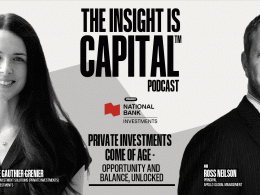by Lance Roberts, RIA
A 50-percent decline will only be a correction and not a bear market.
I know. Right now, you are thinking, how could anyone suggest a 50-percent decline in the market is NOT a bear market. Logically you are correct. However, technically, we need an essential distinction between a “correction” and a “bear market.”
In March 2020, the stock market declined a whopping 35% in a single month. It was a rapid and swift decline and, by all media accounts, was an “official” bear market. But, of course, with the massive interventions of the Federal Reserve, the reversal of that decline was equally swift. As YahooFinance pointed out at the time.
“The S&P 500 set a new record high this week for the first time since Feb. 19, surging an eye-popping 51% from its March 23 closing low of 2,237 to a closing high of 3,389 on Tuesday. This represents the shortest bear market and third fastest bear-market recovery ever.” – Sam Ro

However, as I discussed at the time, March 2020, much like the “1987 crash,” was in actuality only a correction. To understand why March was not a “bear market,” we must define the difference between an actual “bear market” and a “correction.”
Defining A Correction & A Bear Market
Start with Sentiment Trader’s insightful note following the 2020 recovery to new highs.
“This ended its shortest bear market in history. Using the completely arbitrary definition of a 20% decline from a multi-year high, it has taken the index only 110 days to cycle to a fresh high. That’s several months faster than the other fastest recoveries in 1967 and 1982.”
Note their statement that the media’s definition of a “bear market” consisting of a 20% decline is “completely arbitrary.” Given that price is nothing more than a reflection of the psychology of market participants, using the 20% definition may not be accurate any longer.
Over the last 12-years, the pace of price increases accelerated due to massive fiscal and monetary interventions, extremely low borrowing costs, and unrelenting “corporate buybacks.” As shown, the deviation from the exponential growth trend is so extreme it dwarfs the “dot.com” era bubble.

One crucial point is that large deviations above the exponential growth trend historically “mean revert.” Such reversions previously led to very long periods of no returns.

So, what should the definition of a “bear market” actually be?
What Defines A Bear Market
To answer that question, let’s agree on a basic definition.
- A bull market is when the price of the market is trending higher over a long-term period.
- A bear market is when the previous postive-trend breaks, and prices trend lower.
The chart below provides a visual of the distinction. When looking at price “trends,” the difference becomes apparent and valuable.

The distinction is also essential to understanding the difference between “corrections” and “bear markets.”
- “Corrections” generally occur over short time frames, do not break the prevailing trend in prices, and are quickly resolved by markets reversing to new highs.
- “Bear Markets” tend to be long-term affairs where prices grind sideways or lower over several months as valuations are reverted.
The price decline in March 2020 was unusually swift using monthly closing data. However, that decline did not break the long-term bullish trend and quickly reversed to new highs, suggesting it was a “correction.”
Given the already large deviations from the trend in 2020, it required more than a 20% decline to retest the trend. If you review the chart above, the subsequent retest of the bullish trend will require something substantially larger in magnitude.
Just A 50-Percent Decline
Lately, there has been much discussion that a major “bear market” is looming. But given the massive deviation from historical norms, would such a reversion fit the actual definition of a bear market, or will it remain a correction in an ongoing bull trend?
Let’s look at the Nasdaq Index (QQQ), for example. For the first time since March 2020, the index is trading below the 50, 100, and 200-day moving averages. With those previous support levels broken, there could be a “trend change” in the markets.

As noted, the “price trend” is what denotes a “bull” or “bear” market. Since March 2020, the markets traded primarily above their moving averages, suggesting a bull market was intact. However, with markets now trading below those averages, the market’s tone is changing.
Focusing on the Nasdaq is helpful given the extreme weighting of just five companies. The same applies to the S&P 500. The recent cracking of Facebook and Netflix following earnings reports is just a taste of what happens if the support of those “Generals” gets lost.

If the “growth” period of the market is over, then the Nasdaq has a substantial way to fall to complete a 50-percent decline from the 2009 lows. However, that correction would only return the Nasdaq to its previous bullish trend line. Such would imply the bullish trend of prices, or bull market, remain intact.

A 61.8% retracement would make it a “bear market” by breaking the bullish trend.
When you realize that a 50-percent decline in prices would still maintain the “bullish trend” of the market, it just shows how exacerbated markets are due to a decade of monetary interventions.
Fed Driven Excesses Broke The Rules
The over-reaction by the Federal Reserve in 2020 to “bailout” the financial markets due to the pandemic led to market excesses historically unprecedented.

As such, the inevitable “mean reversion” will likewise be just as unprecedented.
A look at the long-term monthly price chart and MACD signal of the S&P 500 index tells the same story.

The current deviation above the running bullish trend lines dwarfs anything seen previously. Notably, that deviation is solely due to the massive injections of liquidity into the financial markets over the last 2-years.
Such is why it is hard to comprehend that a 50% decline in the market wouldn’t technically qualify as a “bear market” as the bullish trend would remain intact.
However, please don’t misconstrue what I am saying. A “mean reversion” will be devastating to the financial wealth of invested households.
Is the decline in January the beginning of something larger? It could be.
Every bear market in history has an initial decline, a reflexive rally, then a protracted decline which reverts market excesses. Investors never know where they are in the process until the rally’s completion from the initial fall.
The deviation of the market due to Fed stimulus was so extended above long-term trends in March 2020, the depth of that “correction” was not surprising.
Given the current deviation dwarfs all others, suggesting that the subsequent decline’s depth is equally as great.
Of course, the question is whether the next round of Federal Reserve interventions will be enough to restore “financial stability.”
“Don’t stress, none of this will happen,” you say?
Maybe? I certainly hope not.
But are you willing to bet your retirement on it?












